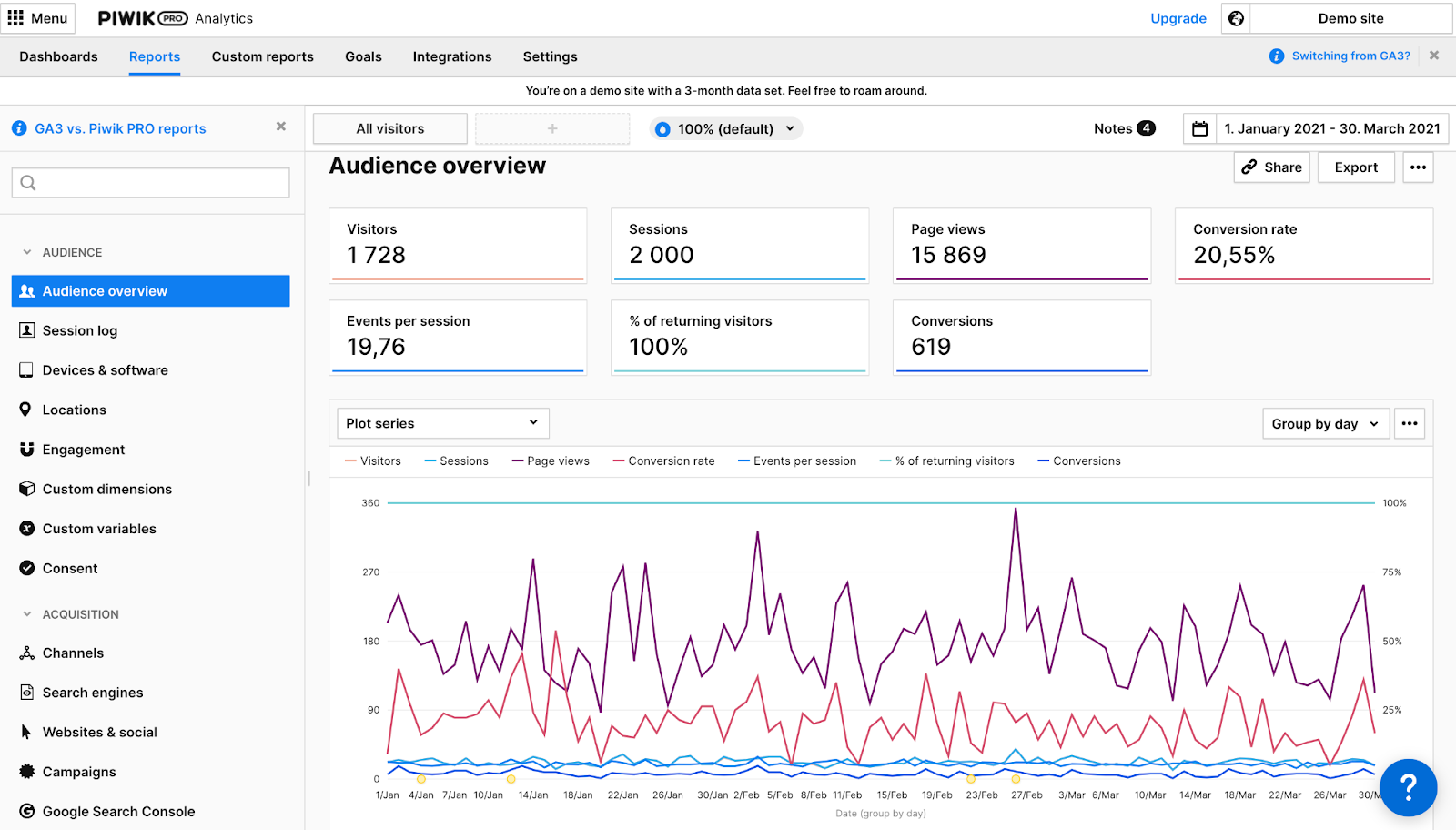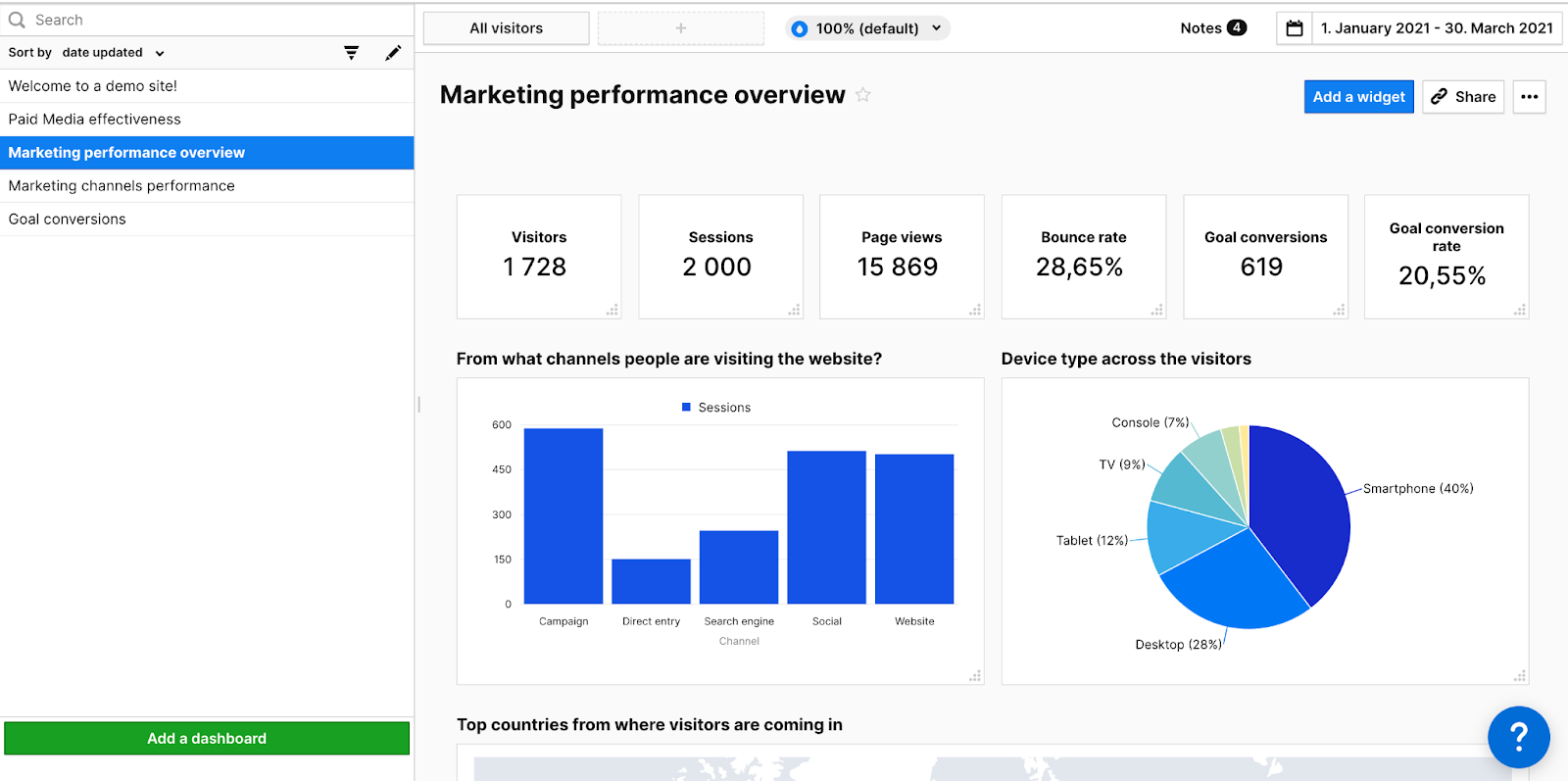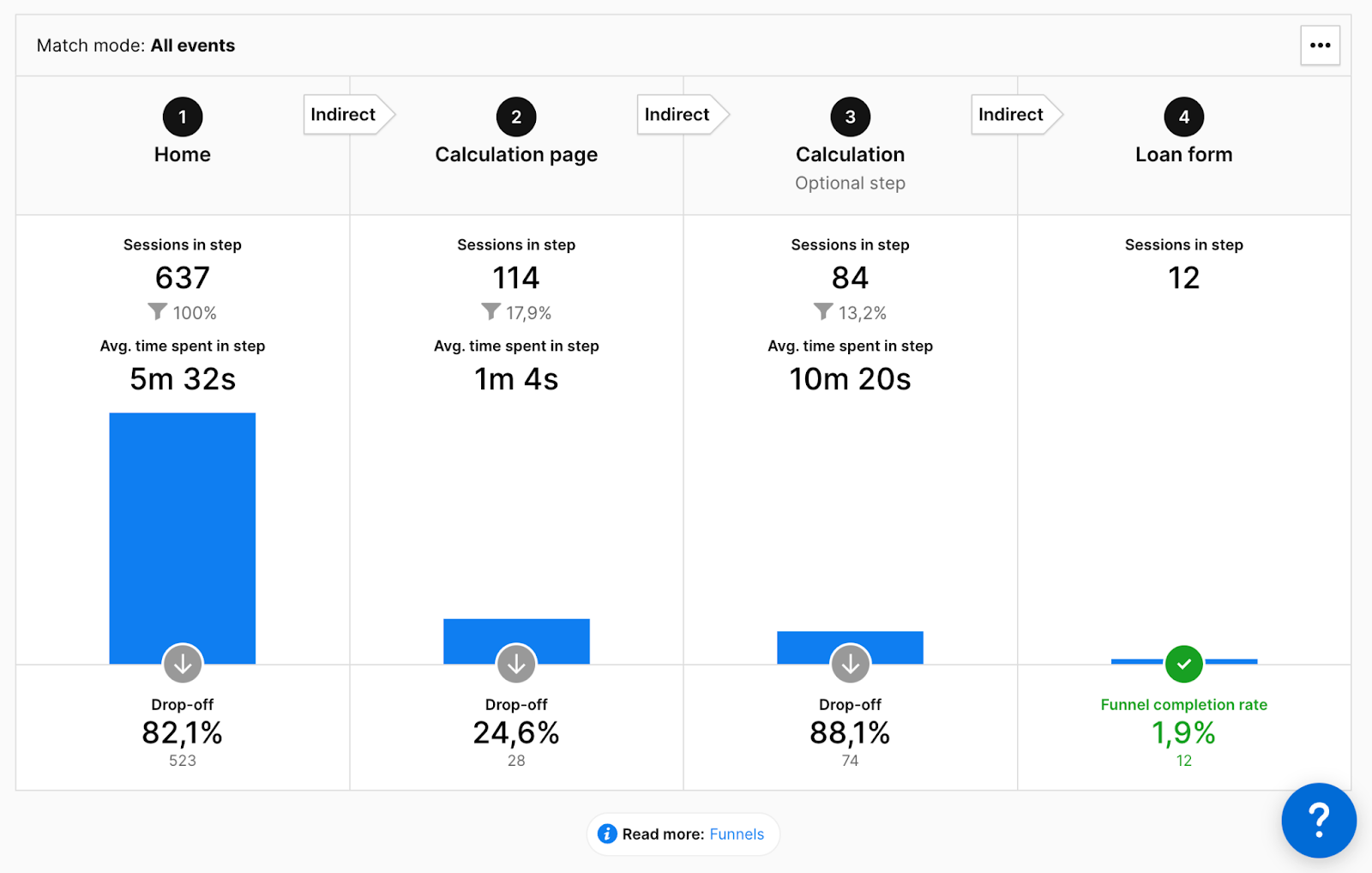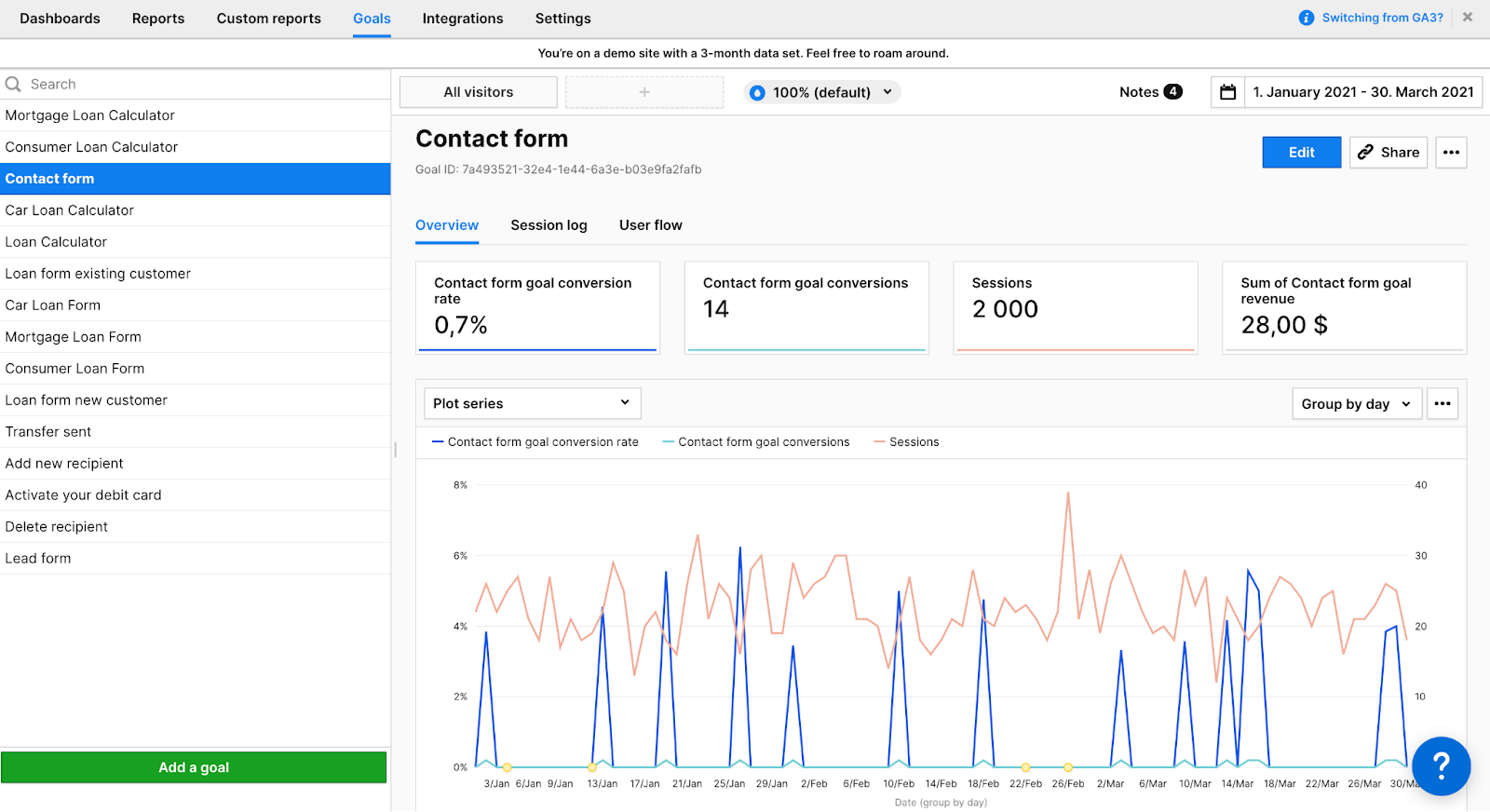Piwik PRO: data responsible analytics
For years, Google Analytics has been the obvious choice for many companies for tracking website visitors. With the EU’s tightening of privacy and data protection regulations and some EU countries declaring Google Analytics illegal, more and more businesses are now considering alternatives to Google’s tools. Piwik PRO is a GDPR-compliant tool that provides businesses with full control over their data.
A versatile analytics tool for businesses of all sizes
Piwik PRO is an enterprise-level, fully GDPR-compliant analytics tool. It is often compared to Matomo, which is not surprising since Piwik originated from Matomo, although they later became separate tools. Compared to Matomo, Piwik PRO offers more advanced and versatile features.
Piwik PRO offers two versions. The free Core version covers up to 500,000 site actions per month, including pageviews and all measurable events on the site. For larger sites that exceed the limits of the free Core version, there’s a paid Piwik PRO Enterprise version. Its price scales based on site size and traffic, starting from €325/month.
The Core version of Piwik PRO runs on Piwik’s hosted cloud service within the EU. In the Enterprise version, companies can choose the hosted cloud version, a private cloud service, or a self-hosted installation on their own server. In all these options, companies retain full control over their data, and Piwik does not sell data without consent.
In terms of user interface and reporting features, Piwik PRO is quite similar to Google Universal Analytics, making the transition for GA users relatively smooth. Piwik PRO also offers some features that are missing in Google Universal Analytics, such as a heatmap tool.

Piwik PRO includes its own Tag Manager for implementing analytics tracking. While it may not be as versatile as Google Tag Manager, it serves its purpose well. Piwik PRO can also be used alongside Google Tag Manager if desired, but if you want to completely give up Google’s tools, Piwik PRO’s way to implement tracking is also convenient.
In addition to the Tag Manager, Piwik PRO has a Consent Manager for managing cookies. While it might overlap with existing cookie banners on a site and doesn’t always cover all cookies, Piwik PRO also allows completely cookie-free visitor tracking.
Reports and reporting features in Piwik PRO
Piwik PRO’s reporting features are similar to Google Universal Analytics and share similarities with Matomo as well. What kinds of reports does Piwik PRO offer?
The main menu consists of three clear sections: Analytics, Tag Manager, and Consent Manager. The Analytics section encompasses all reporting and related configuration.
The Analytics section opens with the Dashboards view. It contains pre-built summaries of various reports. For example, the SEO dashboard shows the performance of organic traffic over a selected period, and the user engagement section provides information about visitor engagement. Dashboards offer a quick overview of data, customizable to suit specific needs.

Under the Reports section, you’ll find all pre-generated standard reports. The division of reports into different sections resembles Google Universal Analytics.
The Audience section includes visitor reports, from visitor counts to device and location information. The Acquisition section focuses on traffic sources and includes campaign reports.
The Behavior section reveals visitor behavior on the site, covering events like internal searches, downloaded files, and clicks on external links. Piwik PRO automatically measures these events, similar to Google Analytics 4. Additionally, the Behavior reports include custom events defined specifically for the site.
Conversion reports cover attribution modeling and channel shares in conversion paths. Website performance provides insights into site performance, including page load times. Piwik PRO also includes a dedicated section for video analytics if separate video tracking is implemented.
In addition to dashboards and pre-built reports, the Analytics section offers the ability to create custom reports. Various report templates are available for different needs, such as tables, funnels, and bar charts.

There is a also dedicated Goals tab for conversions. It is possible to define website goals based on various criteria and review data related to these goals, such as the total number of conversions or conversion rates. Goals can be created based on page views or custom-defined events, among other things. This feature also closely resembles the way Google Universal Analytics defines website goals.

Piwik PRO also integrates with other tools, such as Google Ads, Google Tag Manager, and Google Search Console, on the Integrations tab.
In the final section of Analytics, there is a dedicated Settings tab where various reporting-related settings can be configured and adjustments made. From here, you can create your own visitor segments, which can be used when reviewing pre-built reports. Creating custom-calculated metrics and dimensions is also possible from the Settings tab.
Piwik PRO or Matomo?
Choosing the right tool depends on various factors, and neither is unequivocally better than the other. However, Piwik PRO and Matomo share common roots, making the comparison between them natural. Both are solid analytics tools, but there are some differences.
Matomo is often seen as a more affordable alternative to Piwik PRO, with its Cloud version priced at only 19 euros per month. This affordability makes it suitable for smaller businesses. However, if your site’s actions fall well below 500,000 per month, Piwik PRO’s free version might be more attractive.
One clear advantage of Piwik PRO over Matomo is its faster and more efficient data processing. Matomo users might have to wait several hours or until the next day to see a report they created, while a similar custom report in Piwik PRO is available immediately. This speed difference is noticeable when loading data for a report for longer timeframes.
Piwik PRO offers better integration with other tools compared to Matomo. Connecting it to Google Ads and Google Search Console is straightforward, allowing you to keep using familiar advertising and SEO tools even if you stop using Google Analytics. Piwik PRO also has its integration with Google’s Looker Studio. Matomo’s integrations, on the other hand, often require plugins or third-party tools.
Matomo’s basic reports allow for examining one aspect at a time. Piwik PRO, like Google Analytics, enables the use of a secondary dimension for deeper insights. This feature is lacking in Matomo, potentially resulting in less comprehensive reports.
However, Piwik PRO’s user management can be restrictive. A single email address can only be associated with one Piwik PRO site at a time, which might be limiting if a company has multiple country-specific sites. Piwik PRO has indicated plans to improve user management flexibility in the future.
Both Piwik PRO and Matomo include a heatmap tool, which Google Analytics doesn’t have. Matomo also offers individual session recordings, a feature absent in Piwik PRO. Unlike Piwik PRO, Matomo has its own A/B testing tool.
Ultimately, the choice of a tool depends on various factors. When selecting a tool, consider what aspects are important for your business goals and focus on where you want to direct your website measurement efforts. The tool itself is less crucial than the ability to leverage its data for the development of your online service.
If you’re interested in implementing Piwik PRO on your company’s website, feel free to contact us. Our analytics team is here to help with any questions related to Piwik PRO!











